Last Updated on April 5, 2024
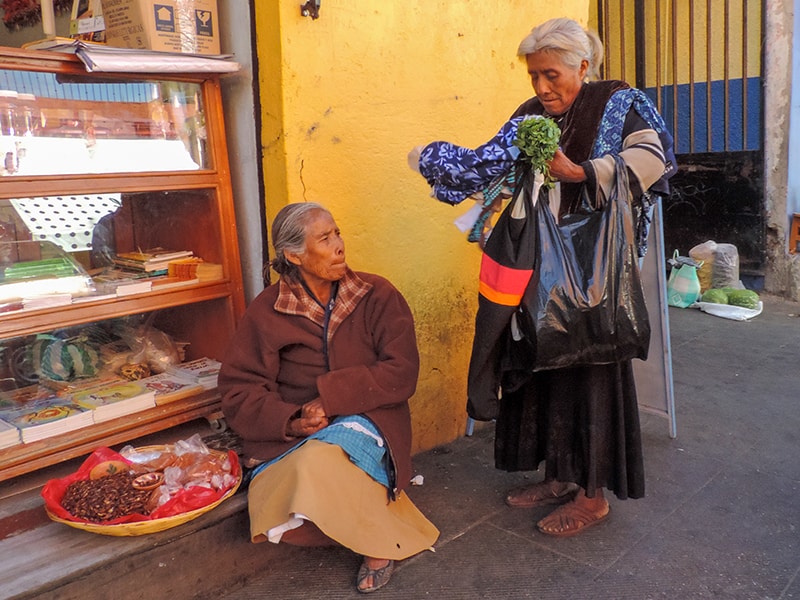
Estimated reading time: 8 minutes
Updated for 2023
By Jim Ferri
You’ll find many things to do in Oaxaca, Mexico, a city so exceptional it’s almost magical. Unfortunately, it’s not listed as one of the top 10 places in Mexico by the tourist office. But in my estimation it should be.
Oaxaca is a kaleidoscope of colorful colonial buildings, a wonderland and amalgamation of markets and galleries. It’s where where artists and artisans retain the indigenous traditions that they’ve brought from their villages. It’s also a place where traditional cooking remains revered, resulting in little restaurants stuck seemingly everywhere you look.
It’s unlike any other city in Mexico.
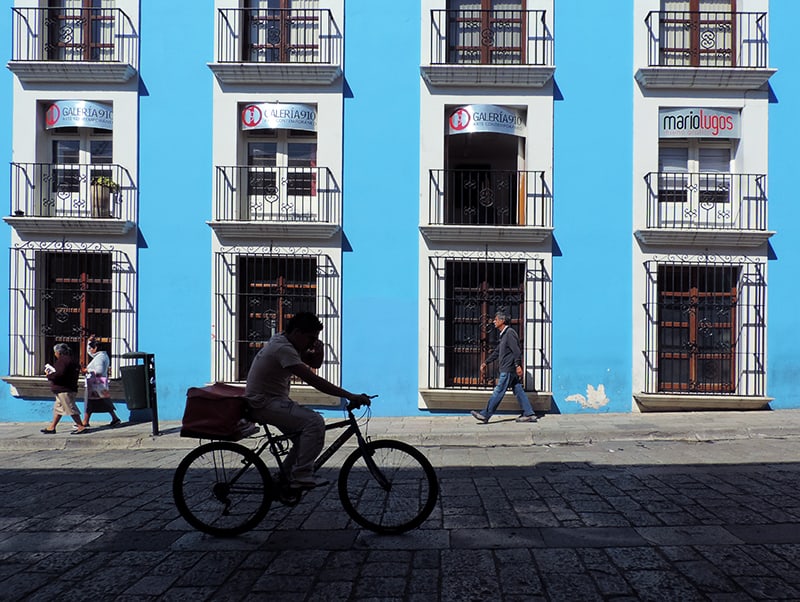
Top Place to Visit: Oaxaca’s Colorful Historical Center
If there’s one word that best describes Oaxaca it’s “color.” Like few other places on earth it assaults your senses in the brightly colored façades of buildings all over. You see it in the city, and even in its dingy outskirts.
But it’s in the charming, well-preserved Historical Center, with its core of Spanish Colonial buildings, where it reaches its zenith. There, no two buildings appear the same. Oaxaca’s Historical Center is a UNESCO World Heritage site.
Oftentimes you’ll see a bright yellow building, next to a blue next to a green next to a white. The city is a riot of colors that has imbued itself into the local culture. Ask directions and frequently you’ll be told to walk until you see the blue building with white trim or the yellow building next to the green.
The colorful center has retained its charm through strict preservation of its old buildings. Beyond the façades of a many of these buildings – ranging from old homes to convents – you’ll find many (sometimes a multitude of them) now serve other purposes. It’s not unusual to walk into an old house and find a dress shop, an art gallery, or office. And there’s often a restaurant or café in the garden.
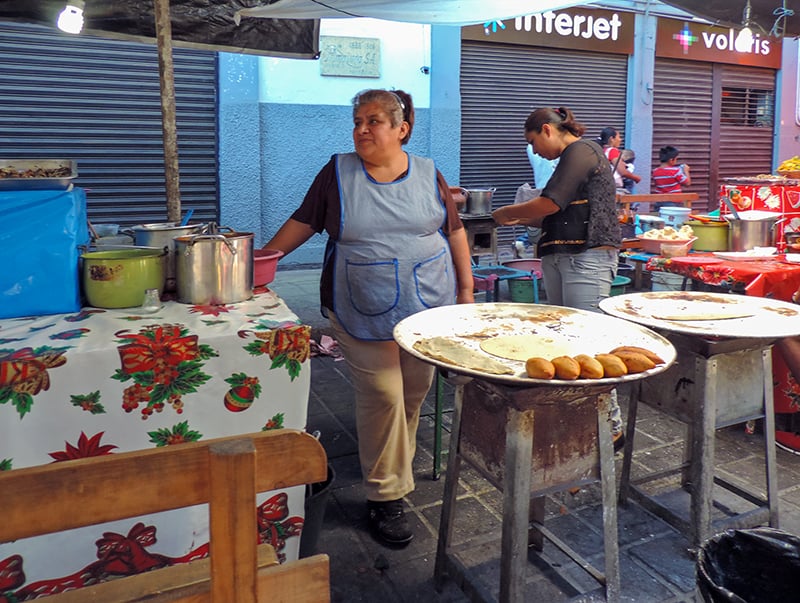
A Don’t Miss in Oaxaca – The Zocalo
As in most of Mexico, Oaxaca’s pedestrian-only Zocalo with its impressive Cathedral, is the center of the old city. Arcaded buildings surround the Plaza de Armas, their portals filled with restaurants and the occasional shop. It’s a large pedestrian zone and, as in most of Mexico, is quite crowded. If you only have a short time in the city, you should certainly head first for the Zocalo.
We made a quick visit to the Cathedral and then wandered across the Zocalo to the busy streets beyond. We were in search of several markets. Originally, however, we were going to visit the Central de Abastos, the large market on the edge of town. But we were advised by our hotel against it, saying it could be unsafe, and suggested alternatives.
We soon found the artisan market, which didn’t evolve into much of anything. But we also found a colorful, down-to-earth slice of Oaxacan life in the vegetable and meat market. If you’re looking for street vendors you’ll find most of them on the periphery of the Zocalo.
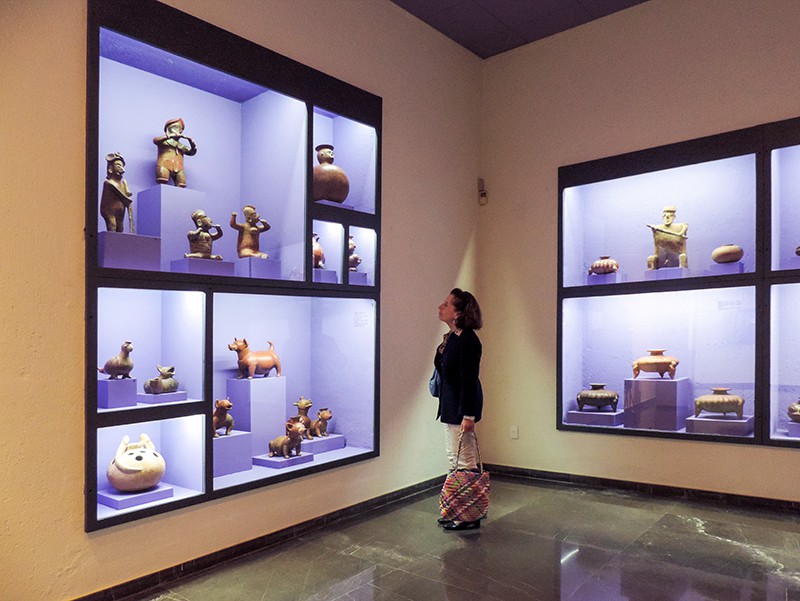
Special Places in Oaxaca – the City’s Museums
On the other hand, you’ll find many of the city’s museums, such as the Museum of Contemporary Art, scattered about in 16th-17th century buildings in the historic area. Most are an easy walk from the Zocalo area.
If you have only a day or two in Oaxaca, however, the one don’t-miss museum is the Museo Rufino Tamayo, which contains a treasure trove of pre-Columbian art. It’s a relatively small museum in which the “wow” factor is not only the incredible artifacts themselves, but also the clean and colorful layout of the galleries.
Tamayo, a renowned Mexican artist, amassed the collection to stop the pieces from falling into the hands of thieves and illicit traders. Upon his death he left his collection to the State of Oaxaca.
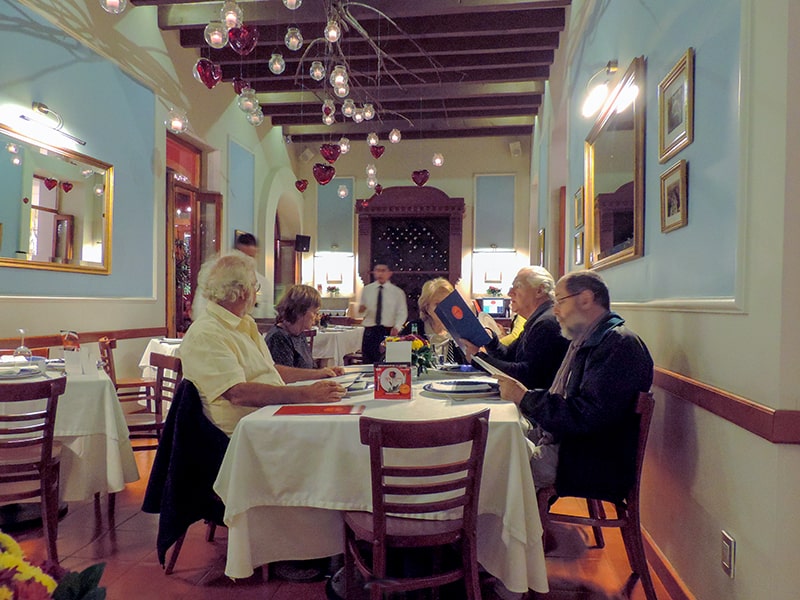
Oaxaca’s Famous Cuisine
One of the most famous aspects of Oaxaca is its complex and sophisticated food, and the city abounds in places to eat. While many restaurants and cafés are tucked away in the patios and gardens of old mansions, you’ll also find a plethora of street food.
On a street one Sunday morning, while waiting for the Rufeo Tamiyo Museum to open, we met a woman making fresh tortillas on a small sidewalk stove. She was offering three types – chicharrón (fried pork skin), another guiso (stew of chicken) and a third chile poblanos, cut up chili in a cream sauce on top of refried beans and a little corn – all prepared the night before, she told us, so she would be prepared to just cook her fresh sidewalk tortillas for morning church-goers.
Oaxaca is famous for its moles (the best come from there), the spicy slow-cooked sauces popular all over Mexico. In fact, Oaxaca has seven different kinds ranging from Mole Verde (made with fresh herbs) to the 30-ingredient Mole Negro.
One excellent, upscale restaurant is the Catedral Restaurant in the historic area. A large meal for two, with three glasses of wine, was about $60.
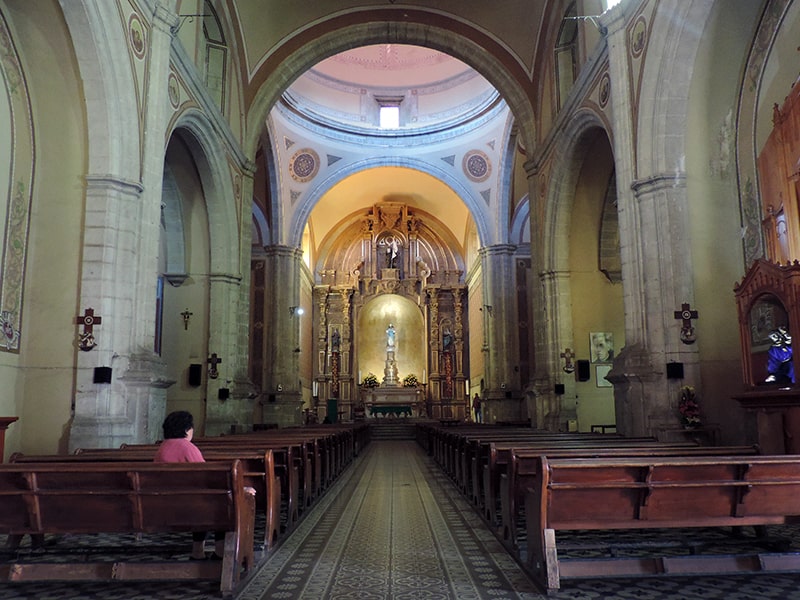
Oaxacan Churches
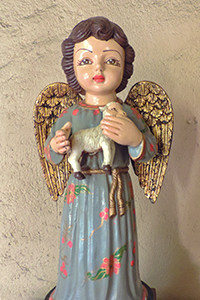
There are a multitude of churches In Oaxaca and if you’re there on a saint’s day you’ll hear explosions around the city as priests set off fireworks in honor of the saint. We were there on St. Valentine’s Day and the cacophony continued day and night.
The best-known of the churches is the Basilica de la Soledad with its impressive 80-foot tall Baroque façade. But its real attraction is the Virgin of Solitude, Oaxaca’s patron saint, which sits above the altar covered with 600 diamonds and crowned with a four-pound gold crown.
The Iglesia de Santo Domingo is another ecclesiastic standout with a gilded interior that combines Baroque, Romanesque, Gothic and Moorish styles. It took more than 200 years to complete after construction began in 1572.
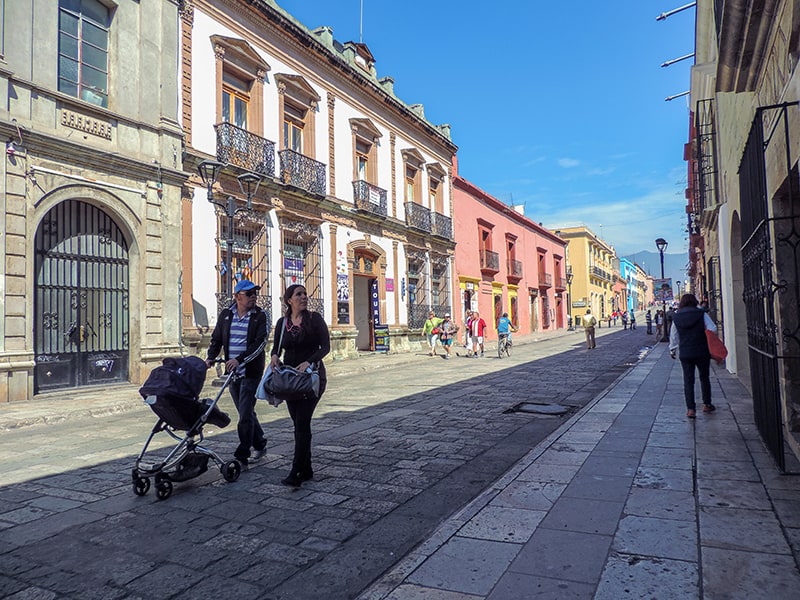
Wandering on Oaxaca’s Wonderful Streets
From the Zocalo you reach Santo Domingo by taking a 10-minute walk up Calle Macedonio Alcala (behind the cathedral on the Zocalo), a beautiful cobbled street lined with colonial-era buildings filled with government offices, as well as the occasional museum, gallery and shop. As opposed to the mostly shaded Zocalo, it’s treeless and you’ll often keep to the shaded side in the hot midday sun regardless of the time of year.
At the plaza at the church you find a platoon of indigenous peoples peddling scarfs, hats, tablecloths and numerous other things. Continue on by them and explore the interesting warren of streets about the church where you’ll find some galleries, shops and, of course, little cafés.
We came across one shop crammed to overflowing with what first appeared to be junk, until we realized many of its goods were antiques. We left with several old, colorful wooden masks used by Puerto Escondido Indians in their celebrations.
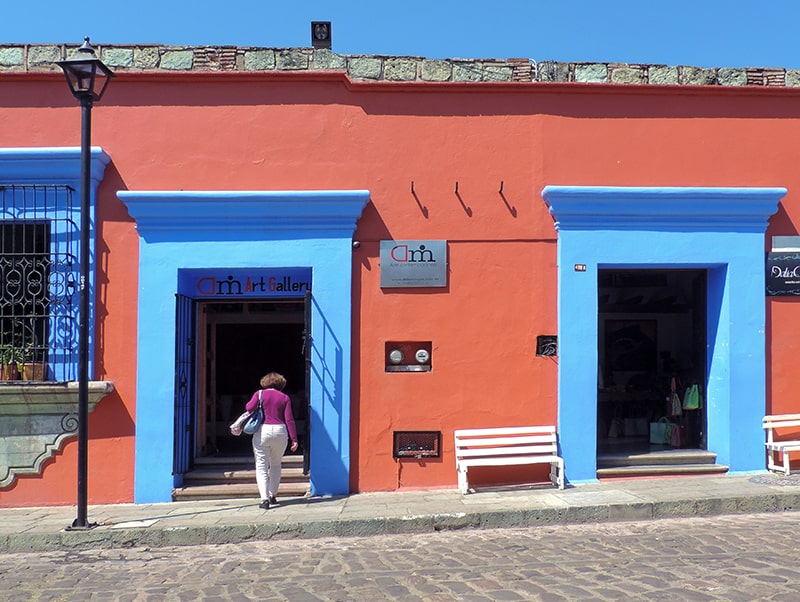
A Note About Hotels
At one time there were numerous convents and monasteries in Oaxaca and many of them have been converted into hotels since they have so many rooms.
We stayed at the Hotel Casantica (about $100 per night including breakfast for two), well located in the center of the historic district. It’s also a former convent, resulting in our room being a bit small for two people, although others were more spacious.
Nevertheless, it is comfortable and clean with a very helpful and pleasant staff. Its charming patio is used as part of the dining area. About the hotel you’ll see artifacts from the original convent.
You may also enjoy: Best Things To Do in Mexico City / Mexico: Xochimilco, Mexico City’s Little Venice / 5 Great Day Trips From Mexico
If You Go:
Hotel Casantica
José María Morelos 601, Centro
Oaxaca
Tel: (52) (951) 516 2673
Museo Rufino Tamayo
Av Morelos 503, Centro
Oaxaca
Tel: (52) (951) 516 7617
Catedral Restaurant
García Vigil 105, Centro
Oaxaca
Tel.: (52) (951) 516 3285

In 2013 my family – five of six siblings – came together in Oaxaca City for a family reunion. Two brothers, one with his wife, flew in from LA; my sister and her three daughters, her husband and one of the girl’s beaus flew in from Paris; one brother traveled up from Lima, Peru; plus myself from Asheville, NC (our brother who lives in Texas decided not to join us as he and his wife were worried about security problems in Mexico we read so much about). We rented a house with a pool in the hills above the city, plus an apartment in a patio setting in the center of town – all secured through airb&b. We spent a week exploring every corner of the city and visited nearby Monte Alban, we saw the world;’s largest tree, el Arbol del Tule – and we just soaked up the good food, the tequila and mezcal (some consumed in the new rooftop bars), the colors, the artisans’ creations, the sun, we were serenaded poolside by a trio singing romantic boleros…a great time was had by all! Your article captures most of what we experienced, minus the mezcal. Viva Oaxaca!
Wow! And your family actually lived through all of that? You must have one strong family. And yes, Viva Oaxaca! It’s a great place.
I think Mezcal should defintely be considered as genuine part of local history and culture, you need to experience it at least once! =)
Love oaxaca. You left out the great markets a d textiles, rugs etc. Mercado benito juarez 20th de noviembre. Many many excellent restaurants my favorige being Boulenc for amazing breakfast breads and pastries
Lovely travel guide but not one of your photos showed people wearing masks. Please alert anyone traveling to Oaxaca to wear a mask and maintain social distancing while here for their protection and to protect us Oaxaqueños.
Hi K.T.
I understand what you mean about wearing masks, but it’s impossible to have all articles show people wearing masks. You’ll see, however, that every article on the site has a link to either that country’s regulations re: the pandemic, or to the CDC in the U.S. providing information on pandemic regulations in that specific country.
Also impossible to show and talk about masks when this trip was years prior to pandemic. Masks are nothing more than a placebo 🙏